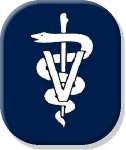 I hope everyone's 4th of July was relaxing, festive, and full of hot dogs and pyrotechnics. Before I go into some more things I've been learning, I wanted to point out how I didn't realize until now how only members of blogger.com could post on my forum threads. I have now changed that so anyone can go ahead and post comments, and I'd really appreciate it if you did. In particular, I'd like feedback about my previous post about my contemplating an internship in food animal medicine.
I hope everyone's 4th of July was relaxing, festive, and full of hot dogs and pyrotechnics. Before I go into some more things I've been learning, I wanted to point out how I didn't realize until now how only members of blogger.com could post on my forum threads. I have now changed that so anyone can go ahead and post comments, and I'd really appreciate it if you did. In particular, I'd like feedback about my previous post about my contemplating an internship in food animal medicine.One other lil tidbit to mention is how I won't be able to post for the next two days because I am going to prison :(. Now before you get all worked up, I am going to one not because of committing a crime, but because all the prisons in VA have adjacent farms where the inmates have to work. There is one vet at the school who is willing to do the herd health management for all these prisons, and he takes students with him. Unfortunately, the prison is four hours away so we'll need to stay overnight at a nearby hotel because we have to spend the whole day at the prison farm. Needless to say, I'm crossing my fingers in hopes that I can come back with some positive stories for you :).
That aside, the picture you see above is of yours truly finishing up a surgery on a cow. The surgery in particular was the correction of a "left displaced abomasum" (LDA). Many people are under the impression that cattle have four stomachs, but in reality it is one stomach with four connected parts. The last part of the stomach before food enters the intestines is called the abomasum: it is functionally and structurally very similar to the stomach that dogs, cat, humans, etc have. The organ normally sits down at the bottom of the cow and on the right side, but without any attachments to the body wall. For a variety of reasons that I won't get into, when a cow gets sick, the abomasum can become atonic and stop contracting, leading to it filling up with gas. This in turn results in the organ moving to the left side of the body and floating up to the top of the cow. Overall, as you can imagine, this can be disastrous for the cow and thankfully farmers have been trained well to identify a cow that is suspicious of having an LDA. The best way to diagnose it however is to place a stethoscope on the upper left side of the cow, along the ribs, and listen while you flick the side of the cow with your finger. If you hear a "thump" sound, the cow is normal, but if you hear a "ping" sound, you have flicked gas and know the abomasum is there. The sound was described best to me by comparing it to the sound a red rubber kickball makes when you would nail it back in grade school. The procedure involves making an opening on the cow's right side, reaching your entire arm across the inside of the cow, grabbing the abomasum, bringing it back over to the right side, and suturing it to the body wall so it can't happen again. In the picture above, we have already done that and have started to close up the body wall. Take note of how the cow is standing for this procedure; all that is done for anesthesia with this is a local block of the muscles and skin that is incised, and somehow the cow really doesn't mind (assuming the block is done correctly).
That's all for now. Wish me luck in prison!!!


2 comments:
/Enter Steriotypical Prison Joke
Dont drop the soap!
/end joke
r/t an internship in large animal..
let your heart be your guide...
the blog is blow'in me away!
Post a Comment